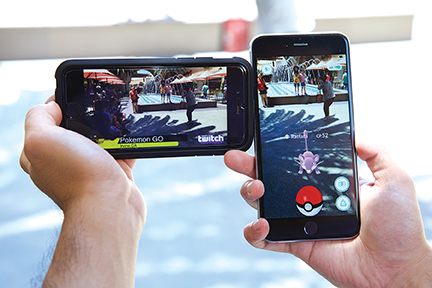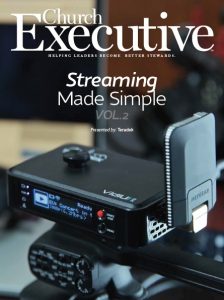
By Andrew Ng
![]() Streaming content is an incredibly powerful, relevant tool for outreach — one which transcends the boundaries of geography and time.
Streaming content is an incredibly powerful, relevant tool for outreach — one which transcends the boundaries of geography and time.
However, not every church can devote a staff member to “owning” the streaming process; instead, many rely on volunteers. So, we must make sure the streaming setup is as user-friendly and accessible as possible. Here’s how.
 It starts with training
It starts with training
It makes sense that volunteers who are dedicated to your church will want to contribute however they can. Some people can sing. Some can be greeters at the door. Some can operate a video switcher or a camera. If technology and video streaming is their interest, then all the better; it’s a real gift for any church.
When a streaming operation is comprised mostly of volunteers, they tend to face some common training challenges. The first is consistency — incredibly important, especially when it comes to live productions.
Camera operators need to know which shots to capture, and when. Then, synchronization is required between the producer, director and all the people working the gear.

But, consistency can be tricky in a church. Although some volunteers show up every week, others simply can’t. This creates a sort of “rotating door” of volunteers, based on availability and — realistically — their passion for that particular ministry.
One way to overcome this challenge is by posting an internal Wiki that contains all the documentation — that provides, in writing, all the processes they need to be familiar with.
In our previous “Streaming Made Simple” installment, we talked about a major denomination that bought 3,000 of our streaming products to enable every church to contribute content to a dedicated, Hulu-like channel. To ensure consistency of training, the denomination created a database on its internal network. It walked users through the setup process and tackled some troubleshooting items. In some regards, the tutorial the denomination put together was superior to the materials we produced as the manufacturer, because it was specific to their group and the desired outcomes.
Pick volunteer-friendly technology
This one might sound obvious — but what does “volunteer-friendly” look like?
First, it’s important to note that not every piece of equipment in a streaming setup can be volunteer-friendly. Certain aspects of production (and the associated equipment) are just plain complicated; these should probably be handled only by your AV or tech minister, or IT minister, or at the very least, by one person. Not just because it’s difficult, but because this lends consistency to your streaming operations.
Camera operation, on the other hand, is pretty simple. You don’t want big, giant cameras that don’t have auto-focus and automatic settings. Instead, you can pick up a relatively good-quality camcorder with automatic zoom and automatic focus for a great price. After that, it’s really just a matter of making sure it’s pointed in the right direction.
The Canon Vixia series is an excellent option, and so is the Canon XA30 Professional Camcorder. They’re very easy to use, and just about anybody can get familiar with them, very quickly.
Generally, I’d recommend a name-brand camera — Canon, Sony, Panasonic — even though, price-wise, they might represent a higher barrier to entry. You’re looking for reliability; choose a camera you know will last.
Alternately, you can use an iPad camera or an iPhone camera to stream! Some of our solutions, like the LIVE:AIR app, let you get creative on a budget while still achieving a professional stream. It’s fun, too.
The Pokémon GO™ craze is a good example of how an app like this can make streaming super engaging. We have friends in the video gaming “e-sports” community who are using our LIVE:AIR Solo app on their iPhones and iPads while they’re chasing Pokémon. Basically, you can stream from anywhere you have cell reception. So, people are streaming their Pokémon GO adventures.
I was curious about it myself, so I snagged an iPad and ran our LIVE:AIR app on it while we went looking for Pokémon. There were a lot of ups and downs in the content, which is good. Oh, the Pokémon ‘s over there! Then it simmers down for a bit, interview other people on the hunt … and then, There’s another Pokémon!
With the right tools, streaming can be very engaging. And, in this case, low-cost, too. Just choose wisely … and don’t be afraid to get a little creative.
Andrew Ng is Director of Marketing at Teradek in Irvine, CA.


